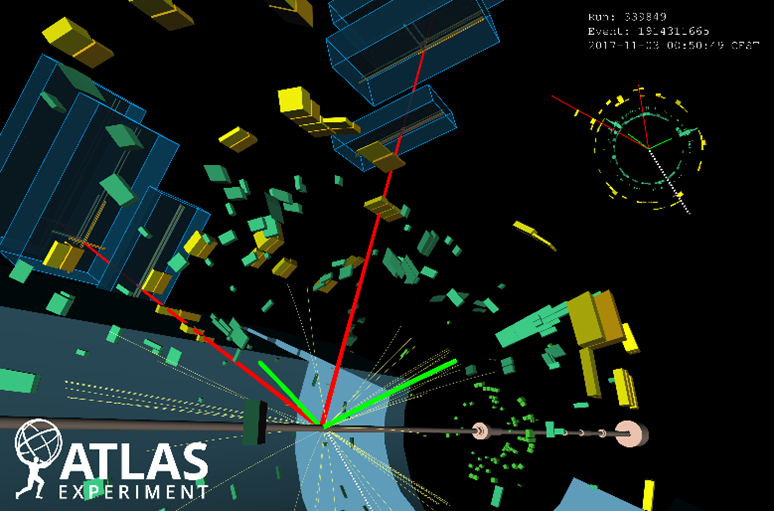Project goal
The collaboration with Cambridge Quantum Computing (CQC) is investigating the advantages and challenges related to the integration of quantum computing into simulation workloads. This work is split into two main areas of R&D: (i) developing quantum generative adversarial networks (GANs) and (ii) testing the performance of quantum random number generators. This second area involves testing the performance of such generators with respect to modern pseudo-random number generators in the context of simulation software used in high-energy physics. The collaboration with Cambridge Quantum Computing (CQC) is investigating the advantages and challenges related to the integration of quantum computing into simulation workloads. This work is split into two main areas of R&D: (i) developing quantum generative adversarial networks (GANs) and (ii) testing the performance of quantum random number generators. This second area involves testing the performance of such generators with respect to modern pseudo-random number generators in the context of simulation software used in high-energy physics.
Project coordinator(s)
Sofia Vallecorsa
Team members
CERN: Su Yeon Chang | University of Oviedo: Elias Combarro | CQC: Simon McAdams, Ross Duncan, Mattia Fiorentini, Steven Herbert, Alec Edgington, Cameron Foreman, Florian Curchod, Chad Edwards, Kimberley Worral
Project background
Research in high-energy physics, as in many other scientific domains, makes extensive use of Monte Carlo calculations — both in theory and in experiments.
GANs are among the most interesting models in classical machine learning. GANs are an example of generative models (i.e. models that learn a hidden distribution from a training dataset) and can sample new synthetic data. We have been investigating their use as an alternative to Monte Carlo simulation, obtaining remarkable results. Much faster than standard Monte Carlo algorithms, GANs can generate realistic synthetic data, while retaining a high level of accuracy (see our fast simulation project). Quantum GANs could have more representational power than classical GANs, making them better able to learn more complex distributions from smaller training datasets. We are now training a quantum GAN to generate images of a few pixels. For this we are investigating two possible approaches:
- A hybrid schema with a quantum generator learning the target PDF, using either a classical network or a variational quantum circuit as a discriminator (variational quantum generator).
- A full quantum adversarial implementation (quGAN).
Monte Carlo methods make extensive use of random numbers. To ensure simulated data is unbiased, it is essential to understand the quality of the random number generators, the question of true randomness, and other related issues. Modern pseudo-random number generators exhibit optimal performance; we are studying the effect of replacing those with real quantum numbers in different Monte Carlo applications.
Recent progress
GANs are systems composed of two networks (a generator and a discriminator) that are trained one against the other in an adversarial fashion. We developed both full quantum GAN models and hybrid classical-quantum GAN models. In the latter kind, the generator is implemented as a variational quantum system and the discriminator is a classical neural network. We tested different configurations (in terms of the number of qubits and circuit depth) in order to reproduce the energy pattern deposited along the longitudinal direction of a calorimeter.
In terms of testing quantum random generators, we investigated various Ising models and machine-learning applications. The results obtained did not demonstrate sufficient sensitivity to show relevant differences between pseudo and real quantum random numbers.
Next steps
The results we obtained in 2020 are extremely promising. In 2021, we will explore techniques to stabilise GAN training and increase the size of the simulated output. We will also explore the effect of noise- and error-mitigation strategies on the quantum and hybrid GAN prototypes.
|
Presentations
|
